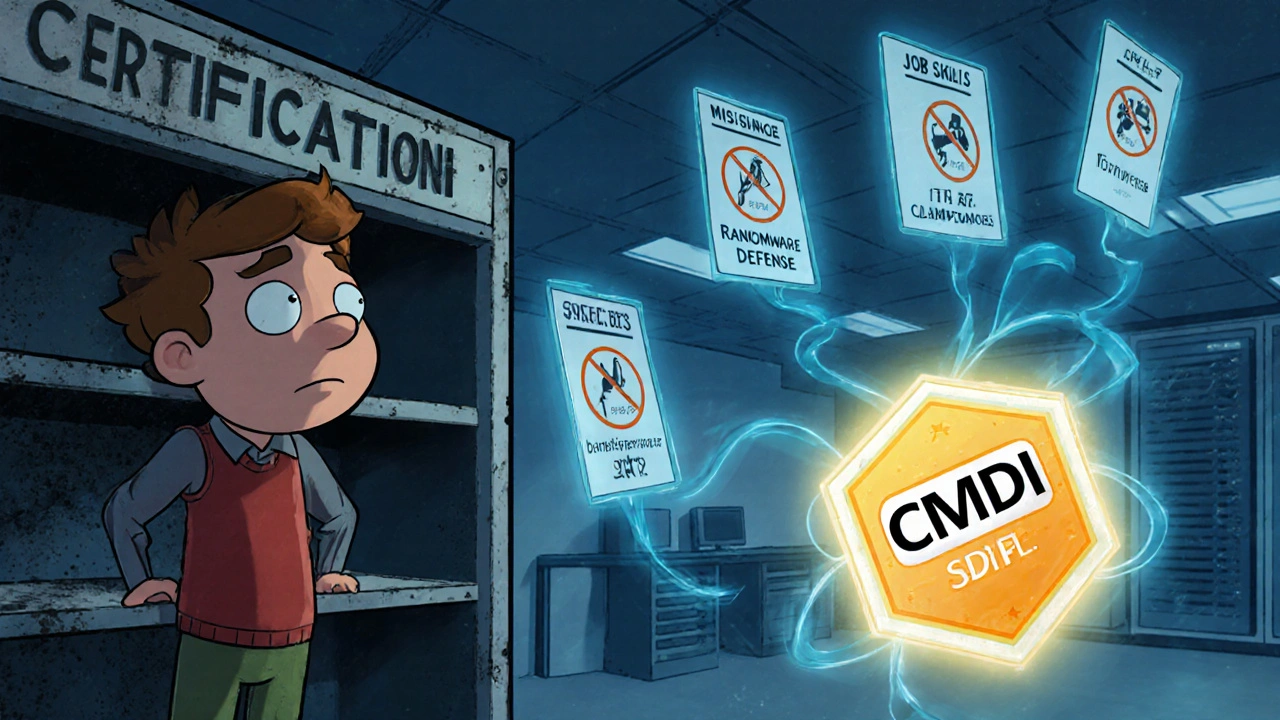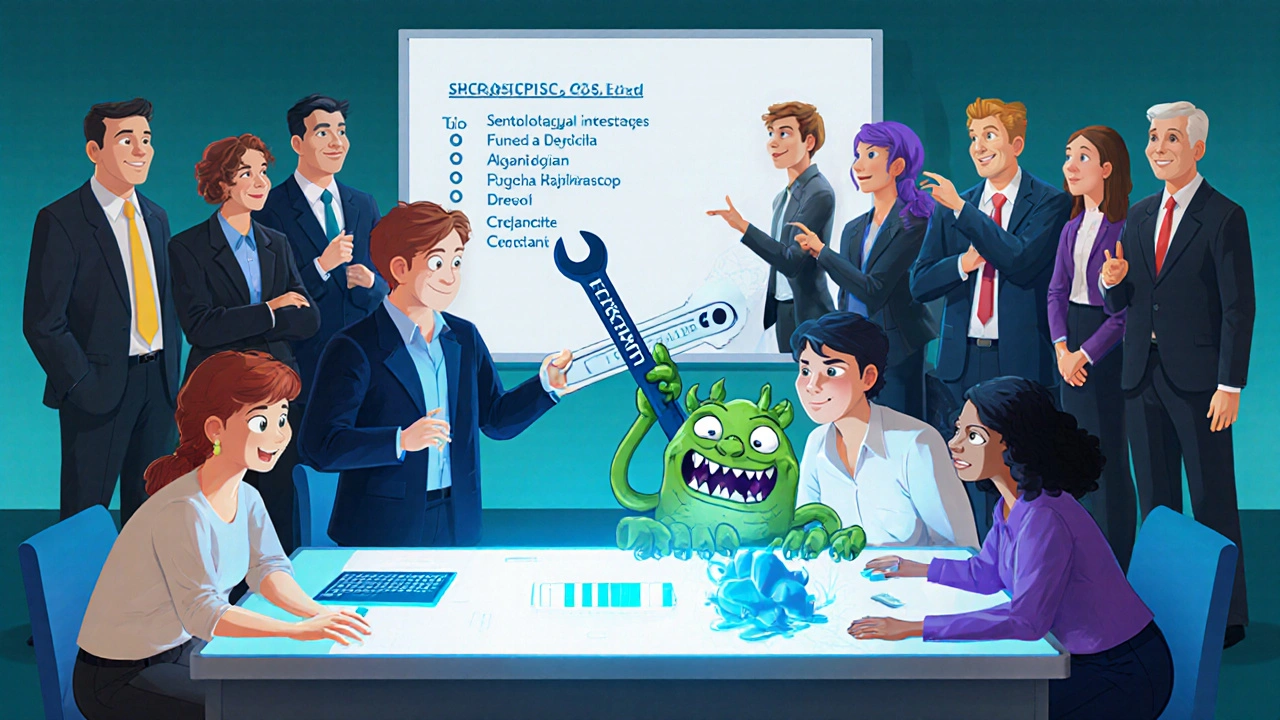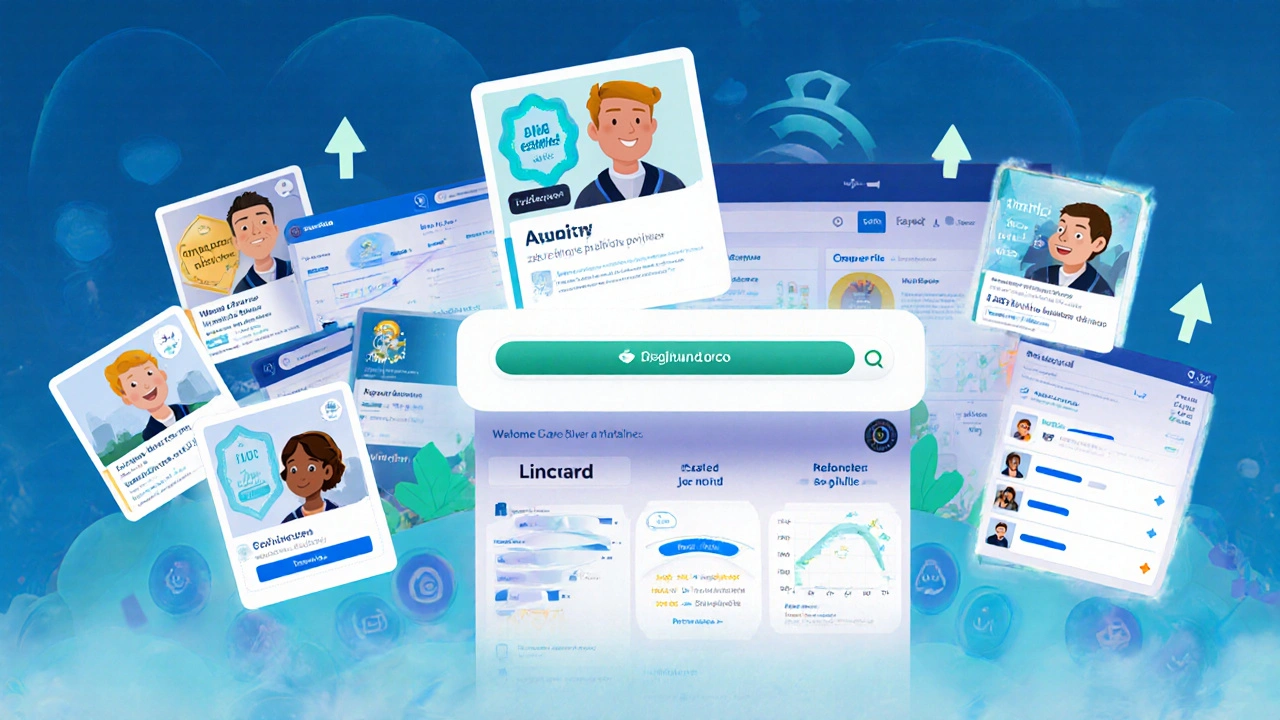How to Create Certification Programs That Employers Actually Trust
 Jul, 26 2025
Jul, 26 2025
Too many certification programs gather dust. You spend months building one-designing the curriculum, hiring instructors, setting up the platform-only to find out no one cares. Employers don’t mention it in job postings. Recruiters don’t ask about it. Candidates skip it on their resumes. Why? Because it doesn’t solve a real problem they already have.
Start with the job, not the certificate
Most certification programs begin with what the creator wants to teach. That’s backwards. Instead, start by looking at the jobs that are hard to fill. Look at job postings in your industry. What skills are employers begging for? What do they list as "required" or "preferred" but rarely find?
In healthcare IT, for example, hospitals struggle to find staff who can manage interoperability between EHR systems. In manufacturing, companies can’t find technicians who understand both PLC programming and OSHA 30 compliance. These aren’t abstract skills-they’re specific, measurable, and tied to real business outcomes.
Take the example of the Certified Medical Data Integrator (CMDI) credential. It wasn’t created because someone thought data mapping was cool. It was built after 17 regional hospitals reported losing over $2.3 million annually due to failed system integrations. The certification was designed around the exact tasks those hospitals needed done: mapping HL7 messages, validating data schemas, troubleshooting interface engines. Employers didn’t just recognize it-they started requiring it.
Partner with employers before you launch
You can’t design a certification in a vacuum and expect companies to adopt it. You need buy-in from the people who hire. Reach out to hiring managers, HR directors, and operations leads. Ask them: "What would make you stop screening out candidates without a credential?"
One group of cybersecurity firms in Texas did exactly this. They formed a steering committee of 12 CISOs from mid-sized companies. Together, they mapped out the top five technical skills their junior analysts were missing. The result? The Practical Cyber Defense Associate (PCDA) certification. It wasn’t theoretical. It was hands-on: candidates had to defuse a simulated ransomware attack in a lab environment, document their steps, and explain their decisions to a panel of actual security leads.
Within six months, 89% of the steering committee companies listed PCDA as a preferred qualification. Why? Because they helped build it. They knew what the credential meant. They could explain it to their teams.
Make it measurable, not just motivational
"Learn Python" is a goal. "Build a script that automates weekly sales reports and reduces manual entry time by 70%" is a credential.
Employers don’t care if someone "understands" agile. They care if they can run a sprint retrospective that reduces missed deadlines by 40%. Your certification must prove that.
Use performance-based assessments. Don’t rely on multiple-choice quizzes. Require candidates to:
- Complete a real-world project using actual tools (e.g., Salesforce, SAP, Tableau)
- Present their work to a panel of industry professionals
- Submit documentation that shows their process and results
A 2024 study by the National Workforce Development Council found that certifications with performance-based assessments were 3.2 times more likely to be cited in job postings than those with only written exams. Why? Because employers know the difference between someone who memorized answers and someone who can actually do the work.

Align with existing industry standards
No one wants to learn a new system just to get a badge. If your certification exists outside the standards that already matter, it’s invisible.
Look at what’s already recognized:
- Project Management Professional (PMP) from PMI
- CompTIA A+ for IT support
- SHRM-CP for HR professionals
Don’t compete with them. Connect to them. If you’re creating a certification for supply chain analysts, tie your curriculum to the APICS CPIM framework. If you’re building a data analytics cert, align with the DASCA principles. This doesn’t mean copying them-it means showing how your credential fills a gap they don’t cover.
For example, the Advanced Logistics Data Analyst certification builds on CPIM but adds real-time inventory forecasting using Power BI and warehouse IoT data. Employers who already value CPIM now see this as a natural next step. They don’t have to relearn what matters.
Build a verification system employers can trust
How do you know the person who claims to hold your certification actually earned it? If you can’t answer that, employers won’t believe it.
Create a public verification portal. Every certified person gets a unique ID. Employers can type it in and see:
- When they earned the credential
- What skills they were tested on
- What project they completed
- Who reviewed their work
Some programs even include short video clips of candidates explaining their work. One logistics cert in Ohio started doing this-and saw employer trust jump from 34% to 82% in nine months.
Don’t just issue a PDF. Don’t rely on LinkedIn badges. Make verification as easy as checking a driver’s license.

Get your credential into job boards and applicant tracking systems
A certification is useless if it doesn’t show up when someone searches for qualified candidates.
Work with job platforms like Indeed, LinkedIn, and ZipRecruiter. Submit your credential to their skills taxonomy. Make sure recruiters can filter for it. Get your certification listed under the right job titles.
Also, talk to ATS vendors like Greenhouse, Lever, and Workday. Many allow custom skill tags. If your certification is listed as a selectable skill in their system, hiring managers will start using it automatically.
In 2025, a new manufacturing certification in Michigan was added to 14 regional job boards and three major ATS platforms. Within six weeks, 217 companies began using it as a screening filter. The certification didn’t market itself. It just became part of the system.
Track outcomes, not just enrollments
Don’t measure success by how many people sign up. Measure it by what happens after they get certified.
Ask these questions:
- Do certified employees get promoted faster?
- Do teams with certified staff have lower error rates?
- Do companies report higher retention after hiring certified workers?
One IT support certification in Arizona tracked graduates for 18 months. Those with the credential were 58% more likely to be promoted to senior technician within a year. Their teams had 31% fewer escalations. That’s the kind of data employers can’t ignore.
Collect this data. Publish it. Share it with hiring partners. Turn results into case studies. Employers don’t trust hype. They trust numbers.
Keep it alive
Certifications that don’t evolve die. Skills change. Tools update. Regulations shift. If your certification hasn’t changed in three years, it’s outdated.
Set a review cycle. Every 12-18 months, bring back your employer partners. Ask: "What’s new? What’s broken? What should we add or remove?"
Update your exam content. Refresh your case studies. Revise your training materials. Announce changes publicly. Let people know you’re not just selling a badge-you’re maintaining a standard.
The most respected certifications in the world-like CISSP and CFA-aren’t static. They’re living documents. So should yours be.
Rocky Wyatt
October 30, 2025 AT 05:03Let me tell you something - most of these certs are just expensive hobby projects for people who think they’re changing the world. I’ve seen this play out a dozen times. Someone builds a certification, throws up a website, and then wonders why no one cares. Spoiler: because it doesn’t solve a problem employers are screaming about. You want trust? Make it painful to get. Make it expensive. Make it tied to real outcomes - not just another badge on LinkedIn that gets ignored during a 3-second resume scan.
Santhosh Santhosh
October 30, 2025 AT 09:27I come from a country where certifications are treated like sacred texts, yet employers here still don’t trust them unless they’re from global giants like PMP or CompTIA. The idea of aligning with existing frameworks is brilliant - but it’s not enough. You also need to prove that the credential actually changes behavior on the ground. In India, we have hundreds of local IT certs that nobody outside our city has heard of. The ones that survived? They partnered with multinational clients who demanded them. Without that, it’s just noise.
Veera Mavalwala
November 1, 2025 AT 02:29Oh honey, you’re preaching to the choir - but let’s get real. You think employers care about your fancy performance assessments? No. They care about who showed up on time, who didn’t ghost the team, and who didn’t bring their personal drama into the server room. I’ve seen people with 7 certifications get passed over because they cried during a code review. The real skill isn’t mapping HL7 messages - it’s not being a walking emotional dumpster fire while doing it. Your cert needs a personality filter. Or at least a therapist on the review panel.
Ray Htoo
November 2, 2025 AT 13:38This is the most practical take on certification design I’ve read in years. The part about verifying outcomes - not enrollments - is gold. I work in HR tech and we’ve started pushing hiring managers to ask for specific project outcomes from certified candidates instead of just checking boxes. One guy came in with a PCDA cert and walked us through how he stopped a ransomware attack in a sandbox. We hired him on the spot. No degree. No MBA. Just proof he could do the thing. That’s the future.
Natasha Madison
November 4, 2025 AT 04:54Of course this works in Texas and Michigan. But what about the rest of us? Who’s really behind these certification boards? Big tech? The military-industrial complex? I’ve seen how these things get pushed - they’re not organic. They’re tools to control labor. Once you start requiring certifications, you create a gatekeeping system. Who pays for the training? Who gets left out? This isn’t about trust - it’s about control. And if you’re not asking that question, you’re part of the problem.
Sheila Alston
November 4, 2025 AT 09:48I’m so tired of people treating certifications like they’re some kind of moral achievement. You didn’t save the world by passing a test. You just followed instructions. Real competence isn’t certified - it’s earned through late nights, failed projects, and colleagues who finally say, ‘Wow, you actually fixed that.’ If you’re building a certification to make people feel good about themselves, you’re missing the point entirely. The world doesn’t need more badges. It needs more people who show up and do the work - even when no one’s watching.
sampa Karjee
November 5, 2025 AT 21:45You speak of alignment with APICS CPIM and DASCA as if they’re divine commandments. But let me ask you - who gave these organizations the right to define what competence looks like? The global elite? The consulting firms that profit from rebranding old curricula? I’ve seen junior analysts in Bangalore spend 18 months preparing for a certification that was written by someone in Chicago who’s never touched a warehouse in their life. This isn’t empowerment - it’s cultural colonization dressed up as professional development.
Patrick Sieber
November 6, 2025 AT 12:20Brilliant breakdown. The verification portal idea? That’s the game-changer. I run a small IT shop in Cork and we started checking those IDs last year. One guy came in with a CMDI cert - we clicked the link, saw his HL7 mapping project, watched his video explaining his error-handling logic. We hired him that afternoon. No interview needed. The system works because it removes guesswork. And honestly? It’s the only thing that’s made hiring less of a lottery since I started in 2015.
Kieran Danagher
November 6, 2025 AT 22:25So you want employers to trust your cert? Great. Now go convince them to pay for it. Because here’s the truth - no one’s gonna spend $1,200 on a badge unless they’re forced to. And if you’re not getting the hiring managers to write it into job descriptions, you’re just running a very expensive fan club. The only cert that ever mattered in my career was the one my boss said he’d fire me if I didn’t get. Everything else? Just digital confetti.
OONAGH Ffrench
November 7, 2025 AT 15:13The key is not the certification but the community around it. A credential without a network is just a piece of paper. The ones that thrive are those where certified people keep sharing results, updating tools, and mentoring newcomers. That’s the real value. Not the test. Not the logo. The ongoing conversation. That’s what makes it alive.
poonam upadhyay
November 8, 2025 AT 08:13Ugh, this is so naive!!! You think employers care about "real-world projects"?? They care about resumes with big names, Ivy League degrees, and consultants who say "this is a good cert"!!! Who do you think writes the job descriptions?? HR bots trained on 10 years of outdated templates!! And don’t even get me started on ATS systems - they reject anyone without a PMP or Cisco cert, no matter how good your project is!!! You’re wasting your time if you’re not paying LinkedIn to push your badge!!!
Shivam Mogha
November 9, 2025 AT 06:55Make it real. Verify it. Tie it to jobs. Done.
mani kandan
November 10, 2025 AT 12:11There’s a quiet revolution happening in places like Pune and Hyderabad - local training hubs are partnering with regional manufacturers and hospitals to build micro-credentials tied directly to equipment they use. No fancy websites. No global branding. Just a 4-week bootcamp, a live demo in the factory, and a signed letter from the plant manager. It’s not glamorous, but it works. Employers don’t need a certification - they need someone who can fix the machine tomorrow morning.
Rahul Borole
November 10, 2025 AT 18:45It is imperative to recognize that the establishment of credible certification frameworks necessitates a rigorous alignment with international standards of workforce competency development. The empirical data presented herein underscores the imperative for longitudinal outcome tracking, which serves not merely as a metric but as a foundational pillar of institutional legitimacy. Without sustained, quantifiable evidence of professional advancement attributable to credential attainment, any certification initiative remains fundamentally an epistemological construct devoid of societal utility.
Sheetal Srivastava
November 10, 2025 AT 20:00Let’s be honest - if your certification isn’t backed by a Fortune 500 sponsor, a VC-funded edtech startup, and a LinkedIn influencer pushing it as "the future of work," you’re just a glorified tutor with a Canva template. And if you’re not using AI-generated case studies and blockchain-backed badges, you’re already obsolete. The market doesn’t reward effort - it rewards hype. Your CMDI? Cute. But without a TikTok campaign and a $50K influencer deal, it’s digital dust.
Bhavishya Kumar
November 12, 2025 AT 02:26There is a grammatical error in the phrase "you spent months building one-designing" - it should be "one, designing" with a comma. Additionally, the term "Osha 30" is incorrectly capitalized - it should be "OSHA 30" per official OSHA guidelines. These small inaccuracies undermine the credibility of the entire piece. A certification program built on sloppy writing will never earn trust. Precision matters.